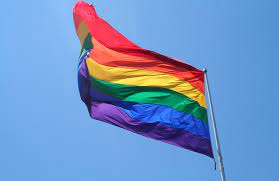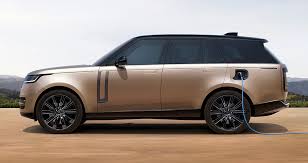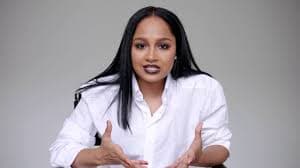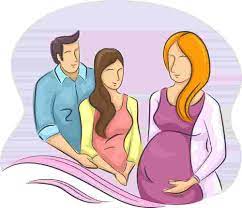LGBTQ Meaning, Flags, Colors, Rainbow and Celebrities

What is the Meaning of LGBTQ?
LGBTQ is an initialism that stands for Lesbian, Gay, Bisexual, and Transgender. The initialism, as well as several of its popular forms, has been in use since the 1990s as an umbrella term for sexuality and gender identity. To recognize this diversity, a common version, LGBTQ, adds the letter Q for persons who identify as Queer or are unsure about their sexual or gender identity.
In 1988, activists in the United States started to embrace the initialism of LGBT. It wasn’t until the 1990s that gay, lesbian, bisexual, and transgender people gained equal acceptance in the movement. As a result, some organizations, such as the GLBT Historical Society, changed their titles in 1999.
Although there has been much debate in the LGBT community over the universal acceptance of various member groups, the term LGBT has served as a positive sign of inclusivity. Even though the word LGBT does not nominally include all members in smaller communities, it is widely recognized to include those who are not specifically specified in the four-letter initialism.
Overall, the introduction of the phrase LGBT has benefited in bringing otherwise disadvantaged individuals into the broader community throughout time. According to the 2016 GLAAD Media Reference Guide, LGBTQ is the recommended initialism because it is more inclusive of younger members of the groups who embrace queer as a self-descriptor.
However, some people believe queer to be a negative term rooted in hate speech and reject it, particularly among the community’s senior members. In addition, those who add intersex people to LGBT groups or organizations may use the extended initialism of LGBTI. These two initialisms are sometimes combined to form the term LGBTIQ.
Related: 2022 New Range Rover Sports, Release Date, 4th and 5th Generation
What Do the LGBTQ Flags Mean?
Any flag that represents a segment or part of the LGBT community is referred to as a pride flag. In this example, pride relates to the concept of homosexual pride. The rainbow flag is the most widely used LGBT flag and, in general, an LGBT symbol. Gilbert Baker, an artist, activist, and openly gay military veteran established the flag in 1977.
Baker created a rainbow flag with eight different colors after being tasked by Harvey Milk, a historic figure in the fight for LGBTQ rights, to create a flag for the queer community. He designed a rainbow flag to represent LGBTQ people, inspired by the classic song “Over the Rainbow” from the 1939 film The Wizard of Oz.
The rainbow flag has derivations that are intended to draw attention to specific similar-interest groups within the community for example, the leather subculture. Some pride flags aren’t solely about LGBT issues, such as the polyamory flag. The terms LGBT flags and queer flags are often used interchangeably.
Related: What is Surrogacy?, Methods, Risks, Outcomes and Concerns
What is the Meaning of the LGBTQ Colors in the pride flag?
The 6-Color Pride Flag is one of history’s most well-known and widely used LGBT flags. This flag is colored red, orange, yellow, green, indigo, and violet. However since hot pink fabric was difficult to come by, it was not used in the creation of these flags. After the killing of homosexual San Francisco City Supervisor Harvey Milk on November 27, 1978, demand for the flag began to rise.
The flag was redesigned once again in 1979. Gilbert Baker chose to split the design in half, with an even number of stripes surrounding each lamp post, in order to decorate the streetlamps along the parade route with hundreds of rainbow banners. To get this impression, he removed the turquoise stripe from the seven-stripe flag. As a result, the six-stripe form of the flag became the industry standard for future manufacture.
- The first color, Red equals life
- The second color, Orange symbolizes healing
- The third color, Yellow stands for sunlight
- The fourth color, Green represents nature
- The fifth color, Indigo stands for serenity
- The sixth color, Violet represents the spirit of LGBTQ people
Other colors that were initially included in the flag are hot pink which symbolizes sex and turquoise equals magic & art.
What Does the Rainbow LGBTQ mean?
The term “rainbow” brings to mind hippies, New Age movements, and organizations like the Rainbow Family and Jesse Jackson’s Rainbow/PUSH Coalition. SGL (same gender loving) is a term used by gay male African Americans to identify themselves from what they perceive to be white-dominated LGBT communities.
LGBTQ Celebrities in the world
According to the Pew Research Center’s 2013 Global Attitudes Survey, “publics in 39 countries have broad acceptance of homosexuality in North America, the European Union, and much of Latin America, but equally widespread rejection in predominantly Muslim nations and Africa, as well as parts of Asia and in Russia.”
In Israel, Poland, and Bolivia, perceptions against homosexuality are divided.” As of 2013, the majority of Americans (60 percent) feel homosexuality should be tolerated, while 33 percent disagree. Although attitudes towards homosexuality in Latin American countries have become more legally tolerant, Mexico and Brazil remain unaccepting of the topic.
Also Read: What is Surrogacy?, Methods, Risks, Outcomes and Concerns
What does the 2+ mean in LGBTQ2+?
LGBTQ2S+ refers to sexual orientations and gender identities that are neither heterosexual nor cisgender. LGBTQ2S+ is an abbreviation for Lesbian, Gay, Bisexual, Transgender, Queer or Questioning, and Two-Spirit.
What is it called when you dress like both genders?
Androgynous is a term used to characterize a person’s look or attire as having characteristics of both femininity and masculinity. Aromantic is a person who does not feel romantic attraction. Moreover, Asexual is a term used to a person who does not experience sexual attraction.
What is it called when you’re not a boy or girl?
People who don’t identify with any gender are called non-binary. Some people’s genders, however, change with time. People who are neither male nor female use a variety of labels to identify themselves, with non-binary being the most common. Other terms include genderqueer, agender, bigender, and more.
What are all the different Lgbtq+ Flags?
The different lgbtq flags are; Bisexual pride flag, Pansexual Pride Flag, Aromantic Pride Flag, Asexual Pride Flag, Transgender Pride Flag, Non-binary Pride Flag, and Agender Pride Flag.





